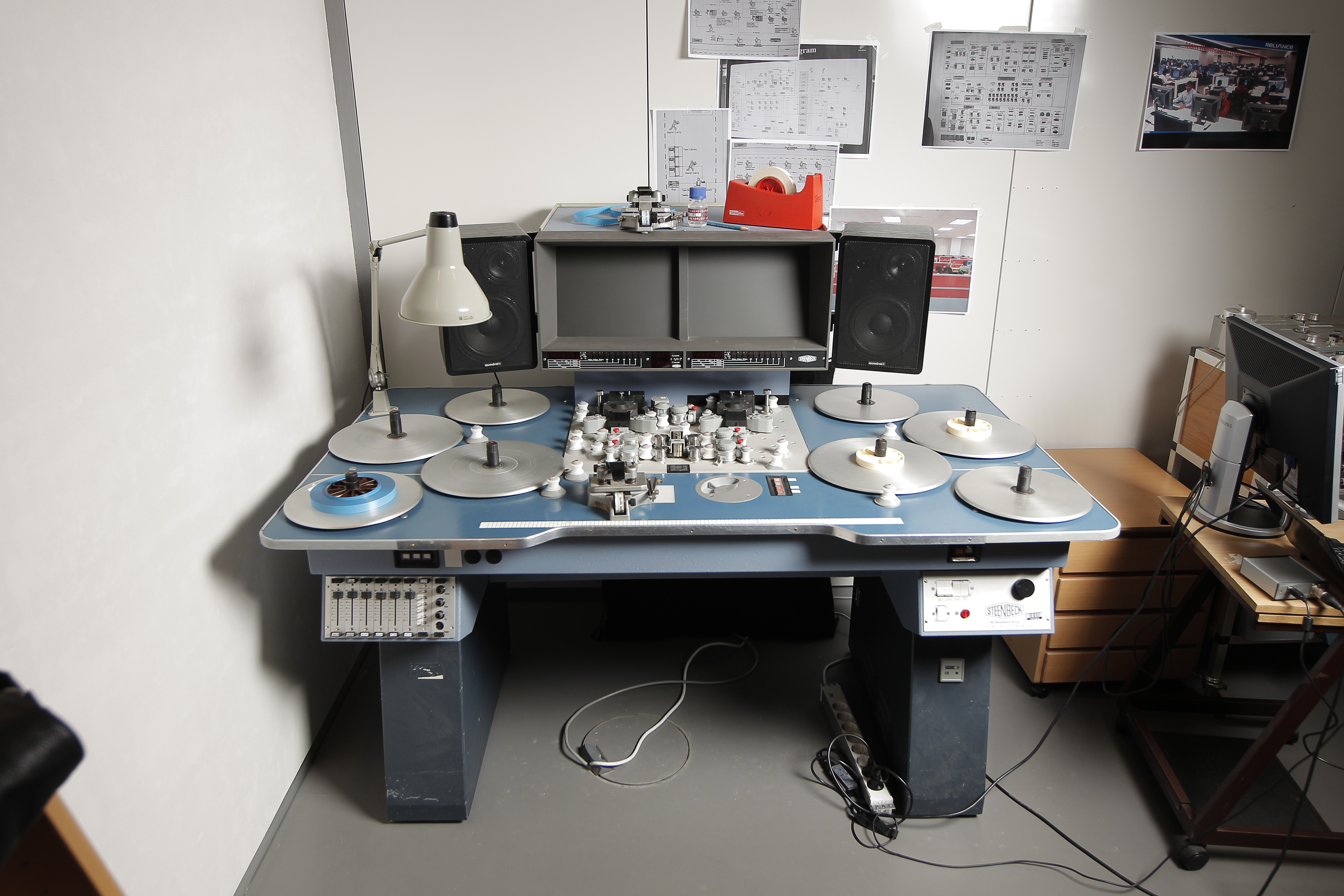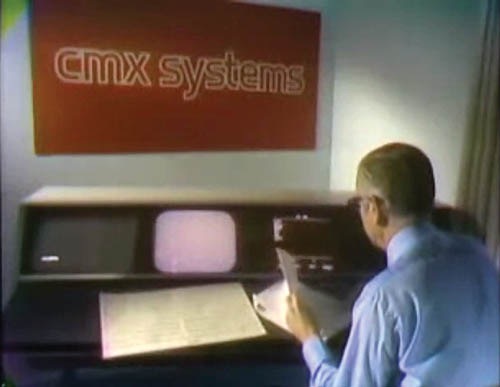Research Into The Development of Editing Technology
Early Editing
Editing in film serves many purposes in the modern era, it helps tell a story, it creates a mood or atmosphere which overall lead to the success of a film or video. In the early years, short films use to be one long, static shot. There was no use of editing, the film ran as long as there was film in the camera. The very early filmmakers were wary of editing film shots together as they believed that joining different shots of different things using different angles and positions would confuse an audience. The earliest films which used some form of editing where created in the 1900s. A great milestone in editing technology can be seen in the film "The Great Train Robbery" which was written, directed and produced by Edwin S. Porter. It was a 12 minute Western film which used a number of innovative editing techniques such as cross-cutting, double exposure composite editing, camera movement and on location shooting.
The most famous individuals to experiment with film include Griffiths, Eisenstein and Kuleshov. D. W. Griffiths was considered the father of narrative cinema; Griffiths invented techniques such as parallel editing pushing his productions to great levels of complexity. Griffiths productions was highly regarded by soviet filmmakers such as Kuleshov and greatly influenced their understanding of editing. .The film "For the love of God" by D.W.Griffiths was the first film that demonstrated the use of a continuity cut; The filmmaker found that through the use of editing he was able to reflect emotion rather than just relying on the emotion reflected through the characters.
Moviola
The Moviola is a device created by Iwan Serrurier in 1924 that allowed film editors to view each individual shot whilst editing in order to determine more precisely where the best cut point may be. The Moviola was a standard editing device in the USA up until the 1970s when they was replaced by the horizontal flatbed editing systems came into use. Originally, the devices where marketed as a home movie projector however, it was too expensive for household use therefore, it was later developed into an editing machine. Although they are fairly old machines, they are still used in some very popular productions such as Munich by Steven Spielberg which was edited by Michael Kahn (Hawks).

Flatbed Editing Suites
A flatbed editing suite is a type of editing machine used in motion picture where images and sound rolls are loaded onto separate plates. Each set of plates is able to move individually, or they can be locked in order to synchronise the images to the sound. A prism reflects the images onto a screen, and a magnetic playback head reads the audio track. Most films were shot on a double-system, this is where the sound and picture are recorded on separate machines. The sound is then transferred to a magnetic track. The editor must then synchronise the picture and sound. The rolls are loaded onto the plates and the film and sound is advanced to find when the clapperboard came together. Once both have been located, a mark is more on both of the strips and the flatbed is switch into interlock mode, so both picture and sound rolls move at the same pace to keep them synchronised. When the editor sees a point to cut one shot away to another, he marks it on both strips and makes a cut in both and adds in the next shot. Steenbeck and K-E-M (Keller-Elektro-Mechanik) are the two leading brands of flatbed editors, both were invented in Germany in the 1930s. European flatbeds came into common use in the 1970s however, they never completely replaced the Moviolas. By the mid 1990s were rapidly being replaced by computer based non-linear systems such as Avid and Lightworks (Morrow).

Linear and Non-Linear Editing
Linear video editing is the process were scenes are copied from one video tape to another using two tape VCRs in the order required. The new tape is thus created in a linear fashion. One disadvantage of this editing technique is that it isn't possible to insert of delete scenes from the new tape without re-copying all the following scenes. Linear editing was the method originally used with analogue video tapes.
Non-Linear video editing is created by loading the film content into a computer from an analogue or digital tape. The editing process creates a new tape by storing all the commands entered by the operator. This method allows the operator to cut, copy and paste scenes in any order and make any changes desired. At the completion of the post-production process the computer can then build a new file by applying the commands to the original digital image stored on the disk. The original digital image on the disk is unchanged. The new video file can then be outputted to a video tape, attached to an email or posted to the web (Winokur).
Online and Offline Editing
Offline editing is a draft cut of a project by editing low quality footage together, this is done so that the main editor and possibly the director can get an idea of what the final cut may look like. Another role for an offline editor is to create an edit decision list which is similar to a log sheet. EDLs are important as they help the main editors to follow along and make changes as they watch the rough cut.
Online editing is a final cut of the project by editing a high quality film together. Online editors creste the final cut based upon the EDL and the rough cut created by the offline editors. Online editing is produce after offline editing as offline is a cheaper alternative which allows you to visualise your idea first before you put money and time into it (Winokur).
The Digital Era
CMX-600 was the first Non-Linear Editing system introduced in 1971 by CMX Systems; the device was referred to as RAVE, or Random Access Video Editor. The CMX-600 was a console with two black and white monitors as well as a pen which was used to control the system. One monitor would show the preview video, the editor would use the light pen to select options, which were over-laid on the image, the left screen would play the edited footage.

Edit Droid is a computerised analogue NLE system which was developed by Lucasfilm. It existed through the mid 80s to early 90s. Edit Droid has three screens, one Sun-1 display used as the graphical UI for the product, one small preview video monitor and a large rear projected monitor which showed the cut (Klingeren).

Avid 1 was based on an Apple Macintosh II computer with unique hardware and software designed by Avid. By the early 1990s Avid 1 began rendering systems such as the Moviola or the Flatbed obsolete by making editing easier and more efficient. The first film edited using the Avid 1 was "Let's Kill All the Lawyers directed by Ron Senkowski in 1992. Over the years Avid had a growing popularity within the film industry however, it was soon replaced by modern editing technology such as Premier Pro (Roos).

Modern Editing Platforms
Premiere Pro is a widely used software application for video editing on macOS or Windows computers. Premiere Pro is used for video editing, commercials and other film, television and online videos. Premiere Pro started as simply Premiere in 1991, the software was developed for the Mac operating system. It was one of the first computer-based non-linear editing systems. The name premiere Pro was introduced in 2003 and has been used for all the later versions. The software can be used to import video, audio and graphics, and is used to create edited versions of film which can be exported to the medium and format necessary for distribution. Premiere Pro is used by video production firms, news stations, marketing professional and design firms; it is the leading editing software in our generation (Smith).
Final cut is a series of non-linear video editing software developed by Macromedia Inc. and later by Apple, the most recent version runs on Mac Os computers. The software allows the editor to transfer video onto a hard drive to be edited, processed and rendered to a range of formats (Buck).


References
Smith, C., 2019. What is Premier Pro (Online)
Available at:https://www.agitraining.com/adobe/premiere-pro/classes/what-is-premiere-pro#:~:text=The%20History%20of%20Premiere%20Pro,used%20for%20all%20subsequent%20version
Buck, J., Ingraham, N., 2011. The History of Final Cut Pro and iMovie detailed in Timeline (Online)
Available at: https://www.theverge.com/2011/11/9/2549556/final-cut-pro-imovie-history-timeline
Klingeren, T.V., 2016. EditDroid: Rise an Fall (Online)
Available at: https://www.youtube.com/watch?v=z99wO2utddo
Roos, D., Avid Editing Machine (Online)
Available at: https://entertainment.howstuffworks.com/avid-editing-machine.htm
Winokur, M., Holsinger, B., 2001 A Brief History of Editing (Online)
Available at: https://www.infoplease.com/culture-entertainment/film/movies-and-film-fade-brief-history-editing
Hawks, Moviola Machine Used By Film Editors (Online)
Available at: https://collection.sciencemuseumgroup.org.uk/objects/co417283/moviola-machine-used-by-film-editors-film-editor
Morrow, J., 2017. Editing on a Flatbed (Online)
Available at: https://nofilmschool.com/2017/06/editing-on-a-flatbed
Comments
Post a Comment